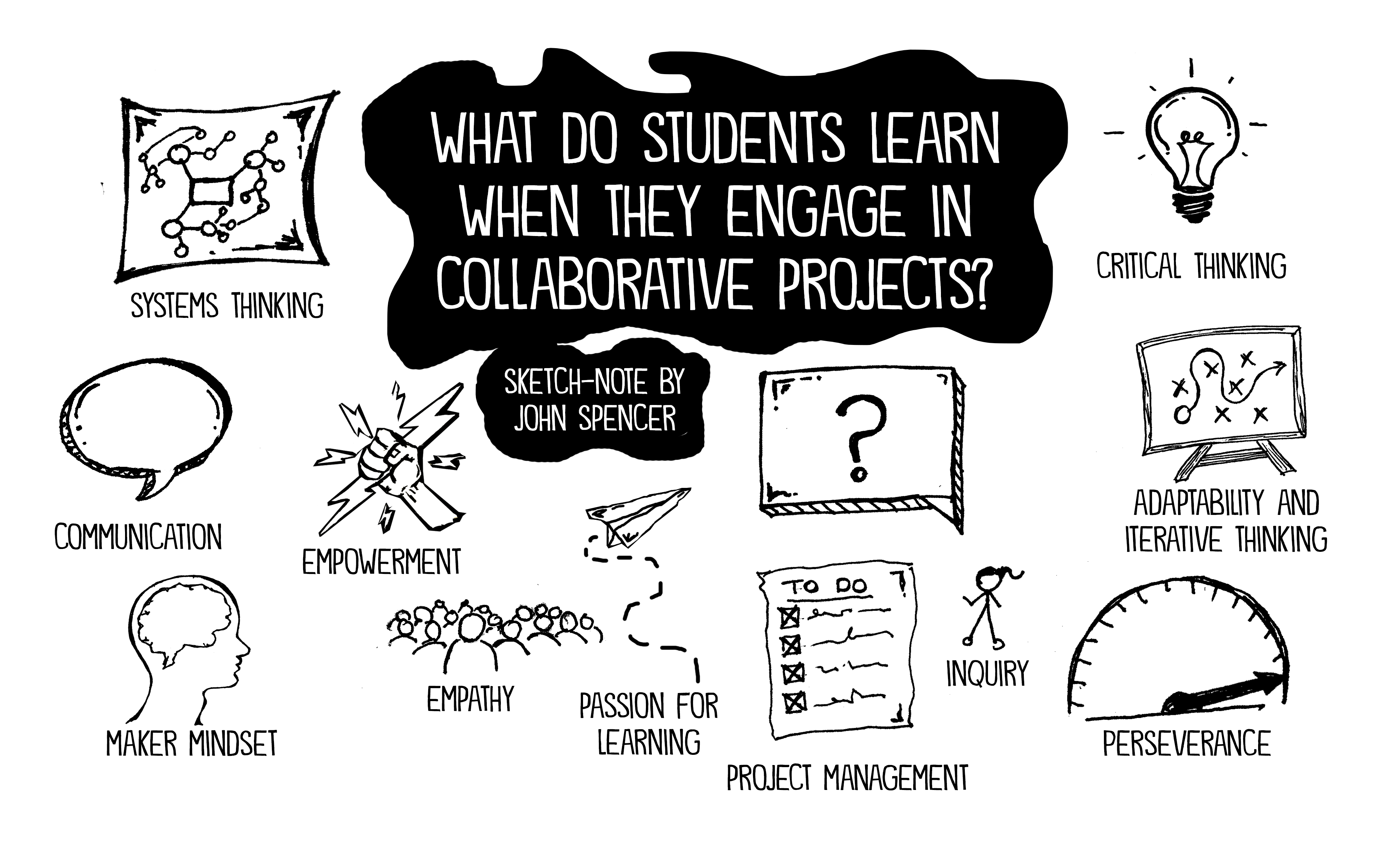As the Gallup poll and countless others have pointed out, many of our students are increasingly less engaged in their own education. Much of this is a result of a focus on short-term, extrinsic rewards to coax kids through low-level tasks and provide technology as games or rewards to motivate learners instead of designing authentic and personal learning experiences that draw on learner’s curiosity, passions, and interests.
I think it is important to highlight that if students aren’t motivated and inspired to solve authentic and meanigful problems, it’s not just them that misses out. It’s all of us. In case you haven’t been paying attention, we have some very real and challenging problems that we continue to face in our world.
If we want to create more engaged, skilled, and empowered learners and citizens, and I would argue that we need to, we need to create experiences where they can practice and develop these competencies. Consider this example from an article by Education Reimagined, Why Does Memorization Reign Supreme in Traditional Learning?
Imagine a student who aspires to climb Mount Denali—a peak that sits over 20,000 feet above sea level. If his training regimen (i.e. curriculum) only consists of memorizing trail maps, reading memoirs by mountaineers, and climbing the hill near his house, it’s clear he would not be developing the skills and stamina needed to successfully complete the journey.
…Environments that focus on deeper learning believe the skills learners gain when diving deeply into a project are transferable and will serve them well in every future learning opportunity. The success rates of graduates from these learning environments, including their sense of confidence and preparedness for post-secondary study and life, bear out this belief.
To change this, I get to work with a lot of educators that are shifting from traditional teacher-centered models of instruction to more learner-centered approaches. There are various models to design high-quality learning experiences that intentionally develop the skills, knowledge, and mindsets that our world demands.
One increasingly popular model is project-based learning, which I am a huge advocate for. Yet, in an effort to “add” more project-based learning I often hear an initiative-focused approach that sounds like: I have to do my thinking maps, AVID strategies, 45 minutes of personalized learning time and get through this unit etc. and then I can “do a PBL.”
This approach is about continually adding on more and more. In my experience it is usually unsustainable and ineffective.
Project vs Learning
When the focus is on the project or “doing a PBL” rather than what students are learning, we are focused on the wrong aspect of project-based learning. More so, if you do a project and as soon as it is done go back to the worksheets or the textbook, we signal that the project was the goal, not necessarily the learning.
Try this instead.
If you start with the learners and the learning goals and then determine which of that many strategies and/ or resources are best to support the desired learning and prioritize your time accordingly to integrate rather than segment them, your students can achieve your learning goals through authentic and meaningful project-based learning.
It Doesn’t Have to be All of Nothing
The Buck Institute for Education identifies Gold Standard PBL as projects that include the following elements: Challenging Problem or Question, Sustained Inquiry, Authenticity, Student Voice and Choice, Reflection, Critique and Revision, and a Public Product. It can be powerful when learning experiences are desinged to include these elements. The reality is, incorporating all of the these elements all the time can be overwhelming or unsustainable based on your own context and needs of the learners, so I love how Kristyn Kamps advocates for a dimmer switch approach:
When teachers use a dimmer switch approach, they can incorporate many, but not all, project design elements into their unit plan. They can continue to highlight and use those elements outside project work to keep the language and mindset of PBL alive, even when students are not engaged in Gold Standard project work. The more elements that are in use, the higher the dimmer switch setting and the “brighter” the PBL experience becomes. Some units are more PBL-esque, and some units are less, but the PBL approach never goes completely dark.
Project-based learning (or any learning) should not be about squeezing in a project at the end of a unit or adding just one more thing. Instead, the best educators understand the learners and learning goals, and design the projects (ideally with the learners) to include learning experiences, strategies, and tools to achieve the desired outcomes.
The power is when educators provide choice for learners and opportunities for them to manage, construct, and drive their own learning to achieve the learning goals and make new meaning. I would argue, even more importantly, they learn to engage in authentic problem solving that will allow them to be active and contributing members of society now and in the future, not simply get through the curriculum or the latest initiative or program.
This sketchnote by John Spencer highlights what students can learn when they engage in authentic projects.
 The project (much like any curriculum) is important but it isn’t the end goal. It is the vehicle that allows the learners to develop the skills knowledge and mindsets to engage as productive learners, workers, and citizens.
The project (much like any curriculum) is important but it isn’t the end goal. It is the vehicle that allows the learners to develop the skills knowledge and mindsets to engage as productive learners, workers, and citizens.


0 Comments
Trackbacks/Pingbacks